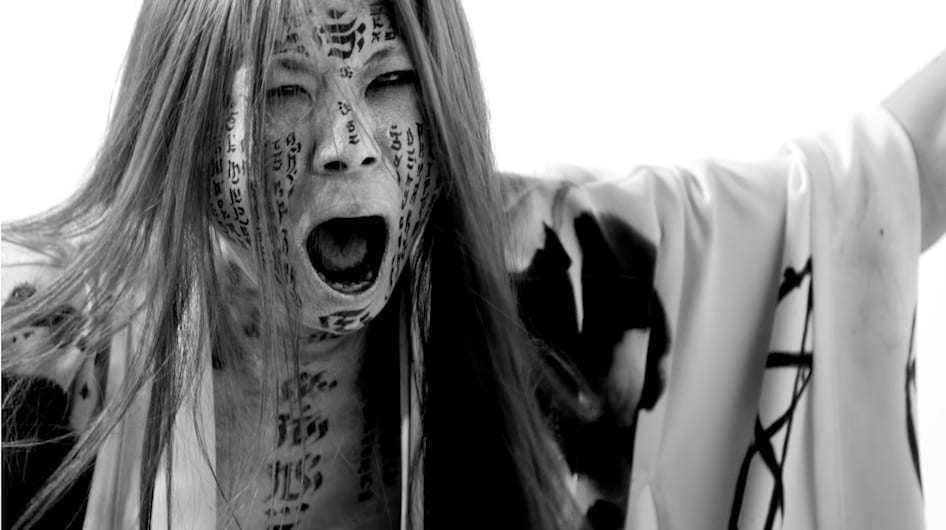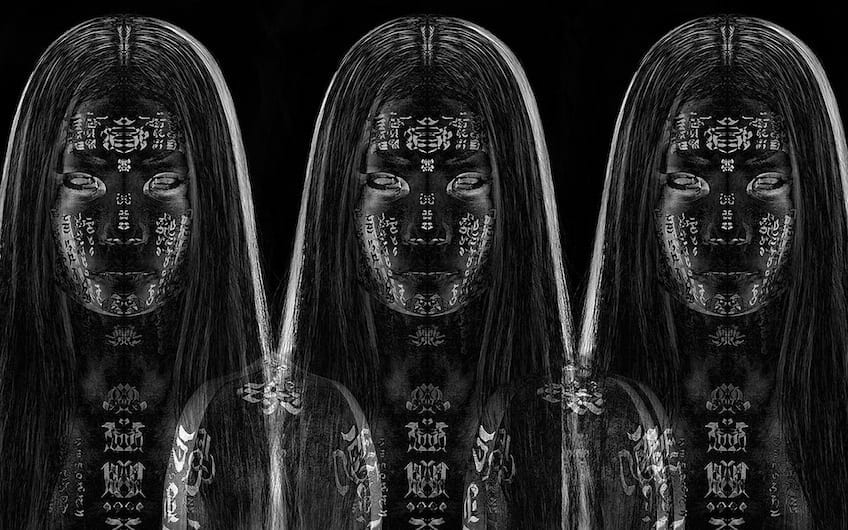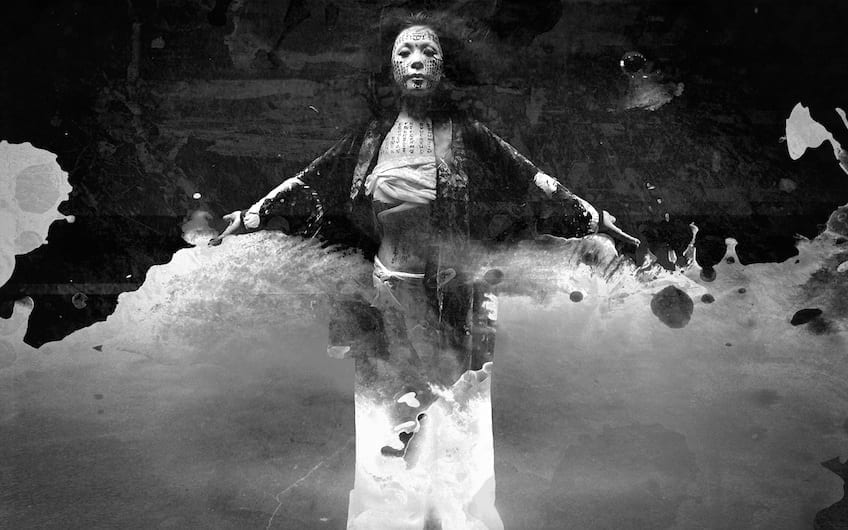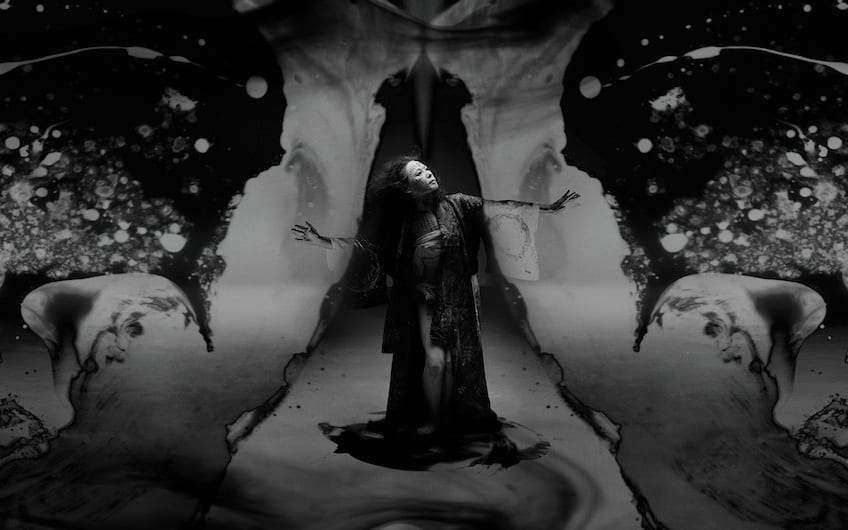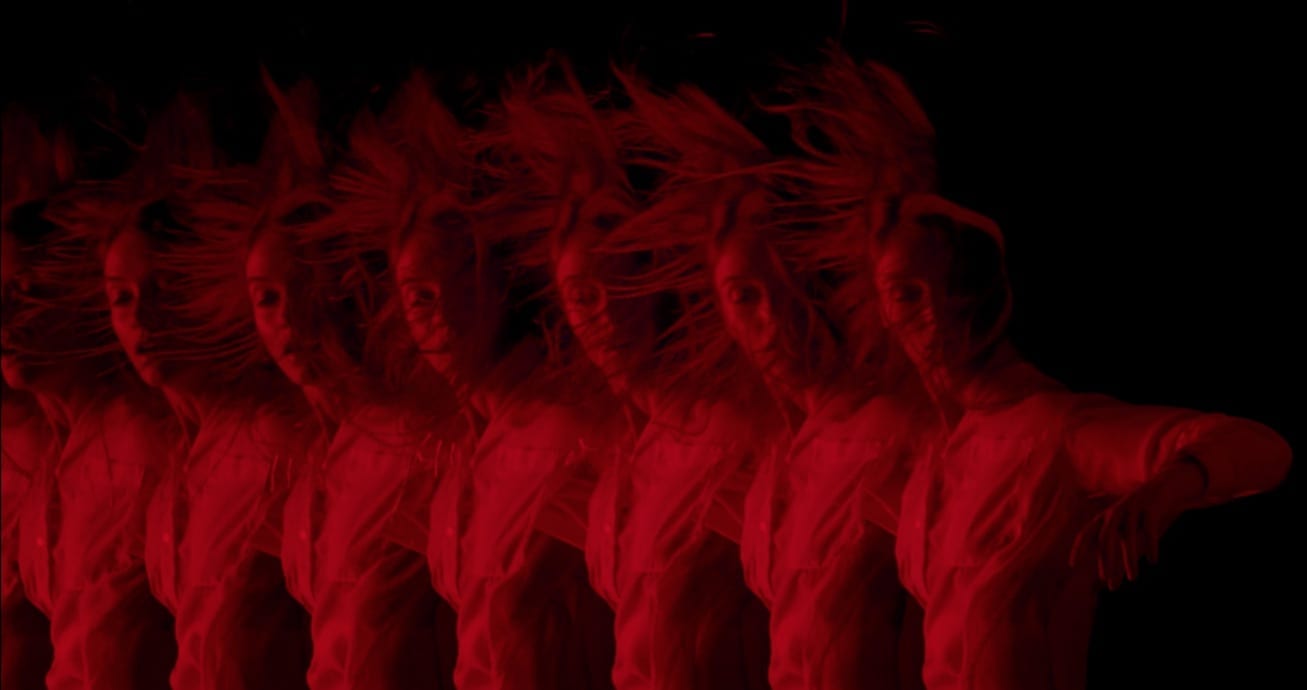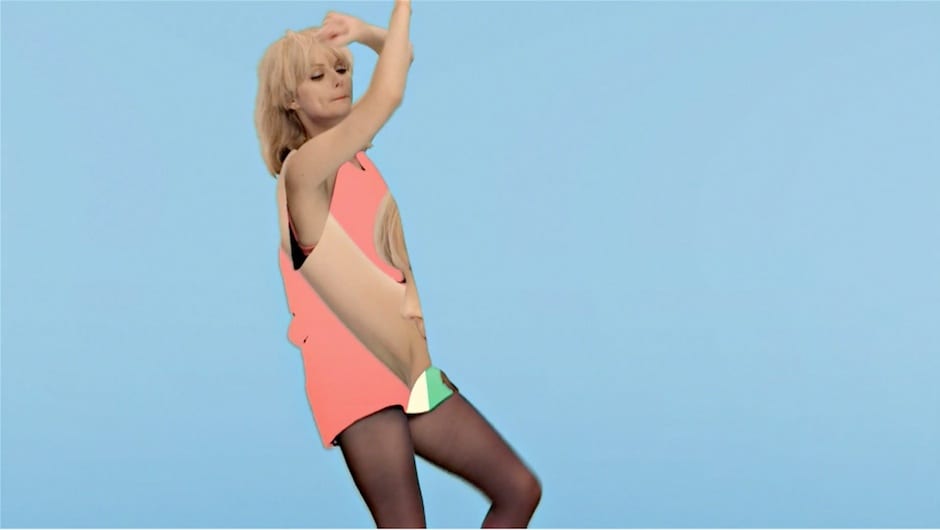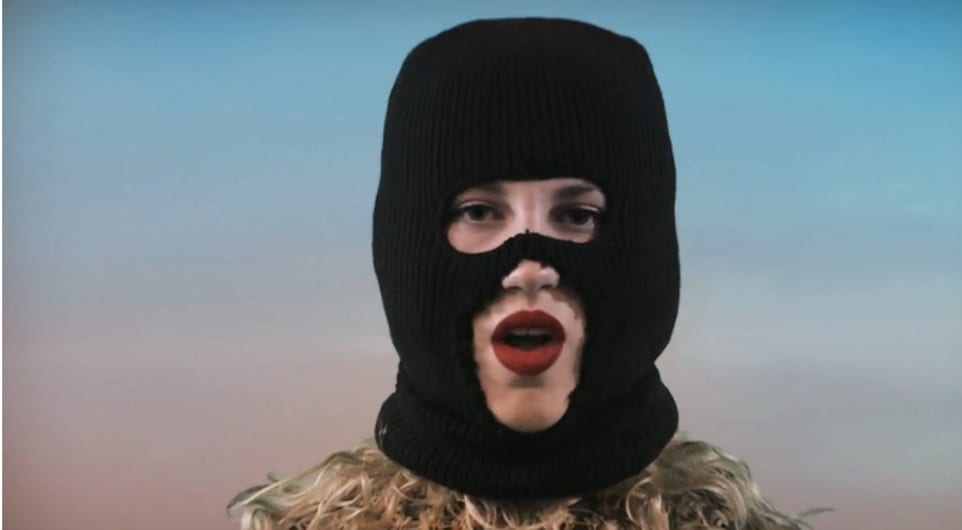As an established calligrapher, graphic designer and creative director with a distinctive voice what were the key lessons you’ve learnt from making your first film?
The lessons learned on this, my first foray into film, have been innumerable. I honestly never imagined that I’d work in film as I’d always maintained that my first loves of painting, drawing and mark making were my true mediums. I was blessed with an opportunity that was in all honesty supposed to be something much more innocuous, much more humble than this final piece.
Initially I was supposed to just film myself working in my studio. The only parameter I was given by Channel 4 was that they wanted to show me doing my calligraphy. What started in earnest soon grew to be a much more ambitious project than I had imagined. I think it was my complete naiveté with the process that allowed me to continue to take on larger and larger challenges.
I learned immutably that your film is only as good as your team. I was so fortunate to have my good friend and co-director/editor, Shane Annas, on this project come on board to handle the logistics of the production.
He brought on veteran cinematographer Peter Trilling to shoot the project with us and he brought a wealth of experience to the production. Equally crucial was the award-winning team at Fake Love who brought their expertise to the Visual Effects in this piece, as well as lauded sound designers Listen who helped create a driving score alongside Grammy Nominated producer Diplo, along with Avant-Garde producer Actress and British duo Plaitum.
Scorcese says that film is the true collaborative medium and he’s right. I think what a director must do is impart a vision and try his/her best to maintain a laser like focus which then must be projected through the lenses of everyone participating in the production; all this in the hope that after that refraction, what remains is as true of an impression of that initial vision as possible.
Do the disciplines crossover or is it a completely different skill set for making a film?
I think there’s an immense amount of crossover and cross-pollination with the disciplines and processes of design and film. I’ve always been drawn to works of film that leave an indelible visual imprint. I became obsessed with filmmakers like Henri Clouzot, Masaki Kobayashi and Kubrick who approached film with a sense of composition that really spoke to my design sensibilities.
Composition, Balance, Rhythm, Pacing, these are all terms used in the lexicon of design and art, as well as film. My approach to the piece was to interconnect a series of still images, or frames which I could clearly envision in my mind. The hard part was staying true to this through the production process. I feel that’s parallel to the disciplines of Product Design and Fashion Design in which I’ve worked and from which I draw a lot of inspiration.
The film had always been intended to be the centerpiece of a multi-faceted body of artwork that includes hand-crafted, hand-painted garments, paintings, photography, custom typography, interactive and immersive media and much much more. For example, I hand-painted all of the ink-overlays and calligraphy used in the effects of the film and we had to devise a completely new way of shooting the paintings in process without showing the hand nor brush. Through that approach I’ve been able to really create a world in which every detail is considered and I hope that shines through.
I wrote the film which in essence is a visual allegory told in three acts through performance. I knew what I wanted this to look like from day one and from there it became a matter of holding true to that and finding a way to tell the story in a visually compelling way.
How did this project come about, how did it evolve?
I was approached by the UK’s Channel 4 along with London-based creative agency Protein and simply asked if I could create a short film based on my artwork. I was completely honored to have been asked to participate in CH.4’s Random Acts program as they’ve had everyone from James Franco to Damien Hirst direct short films for them.
Due to a scheduling deadline I had to turn over a proposed script within three days. I got the green-light and started assembling the team. One of the hardest parts was casting the film… it took about two to three months of searching until a friend fatefully introduced me to famed Japanese actress Miho Nikaido, best known for her staring role in the cult-classic film “Tokyo Decadence”. She’s an amazingly kind person and I was just in awe when I first met her. I showed her my sketches and shared my vision and she had enough faith to sign on.
One hard lesson I learned is that Film is Expensive ! Very, very Expensive! I had a modest budget awarded to me from Channel 4 but I more than tripled that budget, personally financing an overwhelming majority of the production. It’s a risk and investment I feel was worthwhile.
Perhaps the hardest challenge so far has been simply trying to find support and exposure for the project. It’s been truly humbling. Sites like 1.4 do such a great service by shining a spotlight on works of film that aren’t just LOL CAT videos. Finding your audience is immensely hard and I’m still trying to figure that out. We were blessed to be awarded a Vimeo Staff Pick and that’s been a dream for myself and my team. Seriously though, I probably should have added some cats to this 😉
What was behind your decision to shoot in black and white – was there any debate or did you instinctively know how you wanted to shoot and art direct the film?
No debate there. It’s an aesthetic that informs much of my work and while we shot everything in color and the footage looked amazing I ultimately made the call to stick with my original treatment. Also, much of my work is about reductionism, iconography and symbolism; having the piece in black & white not only visually spoke to my oeuvre but also narratively tied into the theme of Duality which is a focus of the film.
You seem to have an intimate understanding of Japanese culture – as an Argentinian living in New York where does this love for Japan come from?
I was fortunate to live, study and work in Tokyo for a little under a year while in school. I studied at Temple University of Japan and ended up interning at MTV Japan for a bit. While there I studied Japanese Calligraphy with a true master of the art form, Yukia Kondo. I’d always felt a spiritual connection to Japanese culture and in particular to their aesthetic tradition. It’s really like none other in the world.
It’s interesting as this work is sort of an amalgamation of my cultural background and various cultural experiences. I’m interested in collisions, be they collisions of cultures, of language, of systems and aesthetics… I think that from those collisions arises something new and unique. I hope some of that comes through in this film.
In terms of film work, what’s next?
Believe it or not, I’m writing this interview from the middle of the Mojave Desert. I’m here shooting a new video which I’d just recently written the treatment for. I’ve been working with Grammy award-winning DJ Skrillex and his label OWSLA on one of their key new groups, Phuture Doom. This project is shaping up to be something truly stunning. We’ve shot everything with some cutting edge equipment in a breathtaking landscape and environment. Really excited for this project to be a follow-up to Scriptura Vitae as it’ll be something completely different.
Beyond that I’m working on a music video for my music project SANTINO with noted DJ and Producer Luca Venezia ( Drop The Lime, Curses.) I love the platform of music videos as they allow for some truly memorable moments to be created in a short amount of time.
I’m also looking to move into shooting more film for fashion as I think there’s a lack of concept in a lot of what saturates the market place and I’d love to inject a detailed, researched and hand-crafted approach.
I know I say this a lot but I feel truly blessed to have been given this opportunity to work in film and I know after all the hard lessons learned that this is something that I truly love and enjoy and I’m excited to continue to ply my craft and explore the medium.
